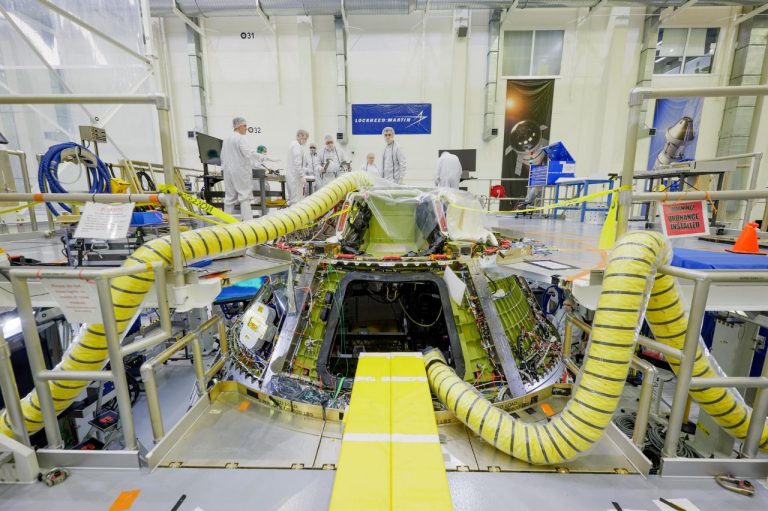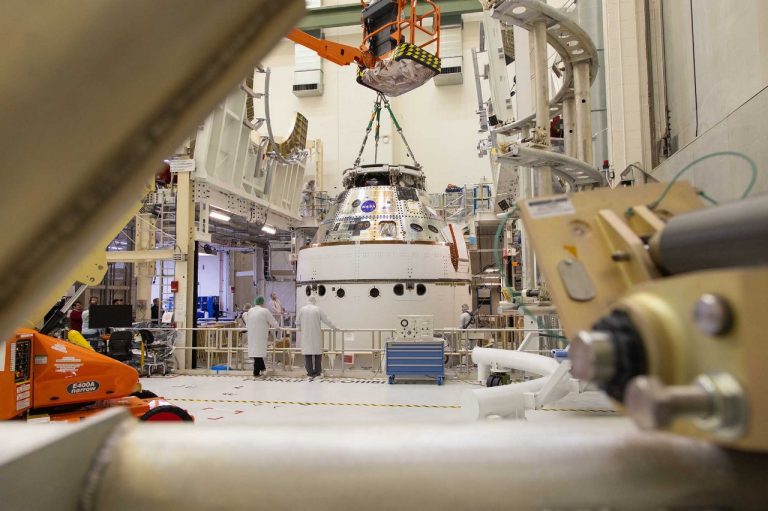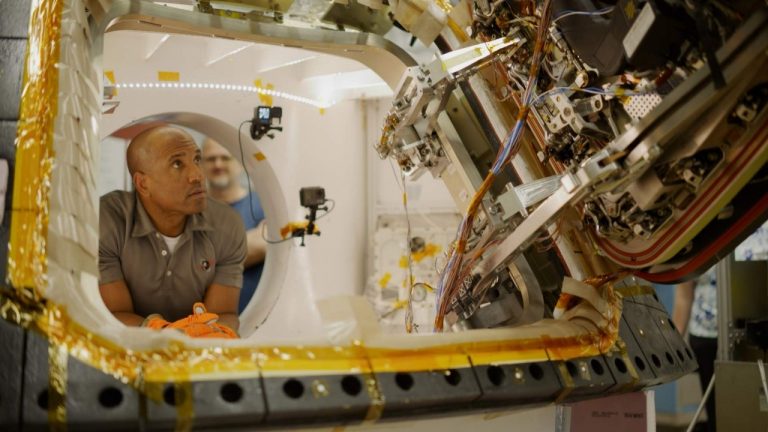Practice Makes Perfect: Artemis II Astronauts Get Hands-On Opening Orion’s Hatch
Orion is a spacecraft like no other, but it does draw from the precious lessons of Apollo I that we learned as a nation, and previous human spaceflight vehicles, to keep astronauts and crew safe.
Taking historical events into account, testing specific spacecraft elements—such as the crew module hatch—have become an even greater part of rigorous training to ensure spacecraft reliability and safety. For Orion, a critical step in this testing is bringing astronauts up close and personal with this vital hardware.
Over the past year, the Artemis II astronauts have visited the Lockheed Martin Space campus in Littleton, Colorado, to conduct a variety of tests and training sessions on the Orion crew module side hatch, which is used to enter and exit the spacecraft.
Over several visits to the campus, NASA astronauts Reid Wiseman, Victor Glover, Christina Koch and Jeremy Hansen, in addition to back-up crew members Andre Douglas and Jenni Gibbons, participated in life-cycle testing of a flight-like side hatch. This is important training that puts hundreds of opening and closing cycles on a hatch to test its durability. With the need to operate the hatch so many times, the training sessions serve as a great opportunity for the crew to train on the many ways the hatch can operate in a variety of situations.
Test and Train Like You Fly
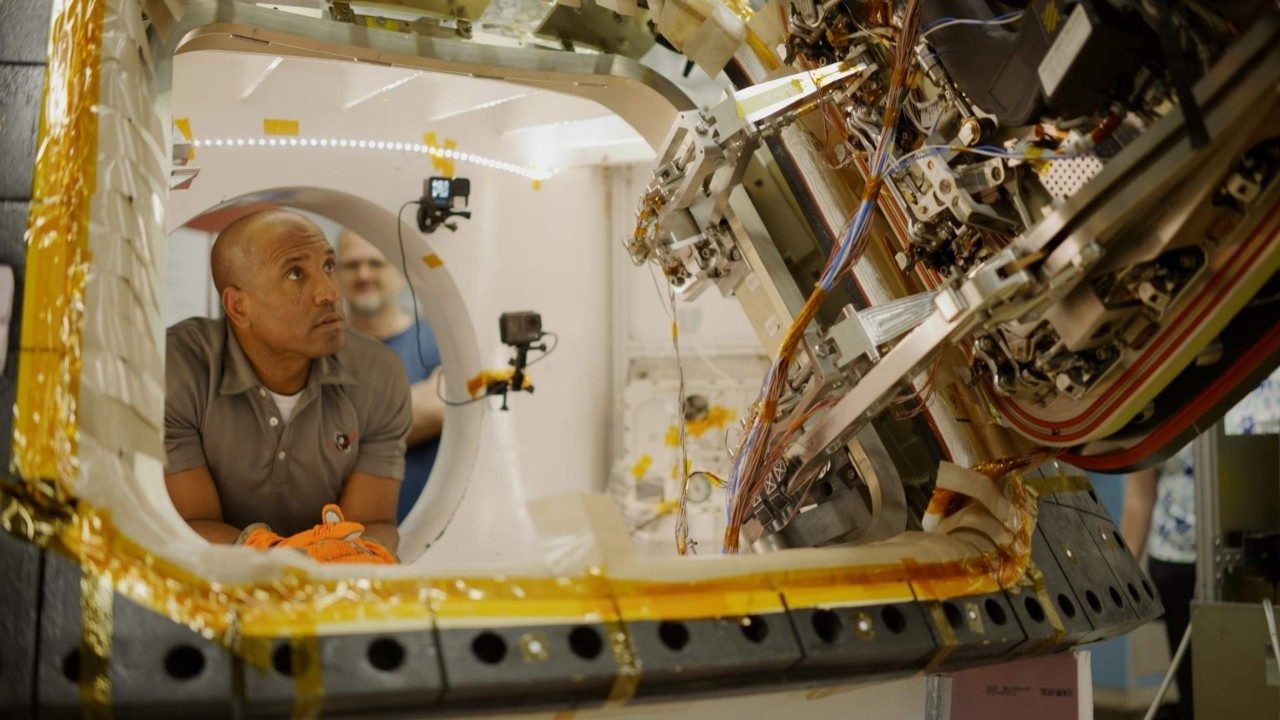
“I’ve been working exploration and Orion-related activities since about 2016, and I learned more today about the hatch than in hours of reading or studying. This is great training,” added Glover during a training session in August.
According to the astronauts, the value of this testing—and the ability to work hand-in-hand with the engineers and technicians—cannot be overstated. Actually seeing and feeling how they will open the hatch, as well as the signals (visual, physical and auditory) that indicate a successful opening, are mission critical.
“The goal is to test like you fly as much as possible, and to test as early and as often as you can,” said John Lawlor, Orion Crew Mechanisms Manager, at Lockheed Martin. “Both the side hatch and Launch Abort System (LAS) hatch have complex designs and we learn about how they perform and react to environments in testing. Having the crew in person teaches us even more about the hatches, as we see how they interact with the various components. It’s invaluable they have ample opportunities to train and test so they are ready and comfortable for flight.”
Pyros, Tandems, Oh My!
During normal operations of a mission, the crew will actually never operate the hatches. Ground systems personnel will help the crew get in their module on the launchpad and close the hatch behind them. And after splashdown, recovery teams will open the side hatch and assist crew to exit while on the ocean. If the hatch needs to be operated by the crew, it will likely be done by Koch, who will sit closest to the hatch.
Because of this responsibility, Koch also participated in a specific emergency egress test where both the LAS hatch and the crew module side hatch were opened in tandem using pyrotechnics. The side hatch is normally opened using a manual gearbox system, but in an emergency, the hatch release mechanisms have self-contained pyrotechnic devices that release the latch pins instantaneously. This allows the side hatch to open quickly which, in turn, pushes the LAS hatch away, or in tandem, enabling the crew to get out swiftly onto the launchpad.
The Ultimate Test
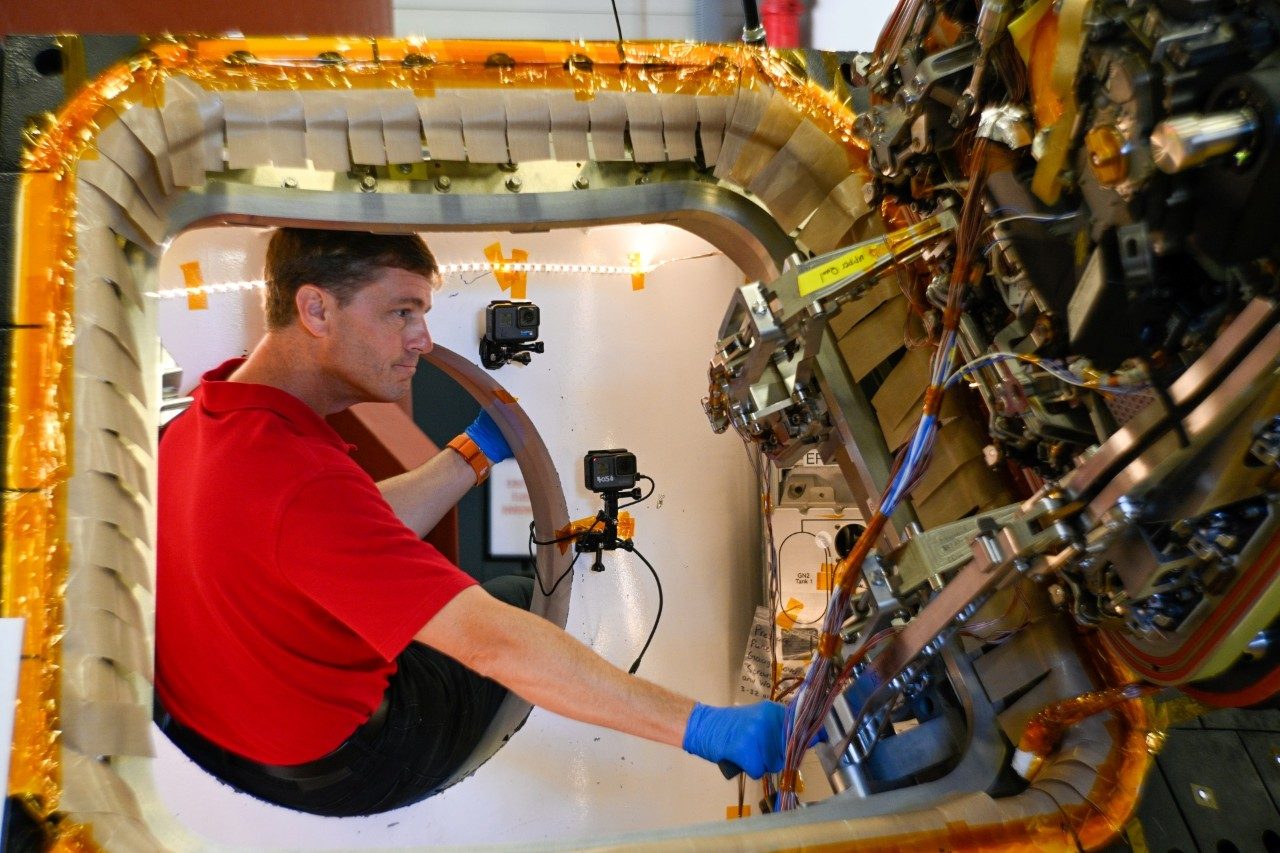
While Orion and its hatches have flown to space twice before—on EFT-1 and on Artemis I—the Artemis II test flight will be the first time the side hatch will have to protect humans onboard. The Lockheed Martin team has pushed the hatch to its limits to ensure this complex system operates as designed and keeps in the appropriate internal air pressure for crew safety, all while ensuring it can withstand the harsh environment of space and constant changes in pressure over the course of the mission.
Artemis II will be the first crewed flight test of the Orion spacecraft around the Moon, with Artemis III sending the first humans to explore the region near the lunar South Pole. All of this culminates in the exciting return back to the lunar surface since the Apollo era. With diligent testing and rigorous attention to mission requirements, we are taking with us the lessons learned from nearly 60 years ago to continue humanity’s journey back to the Moon, on to Mars and beyond.





